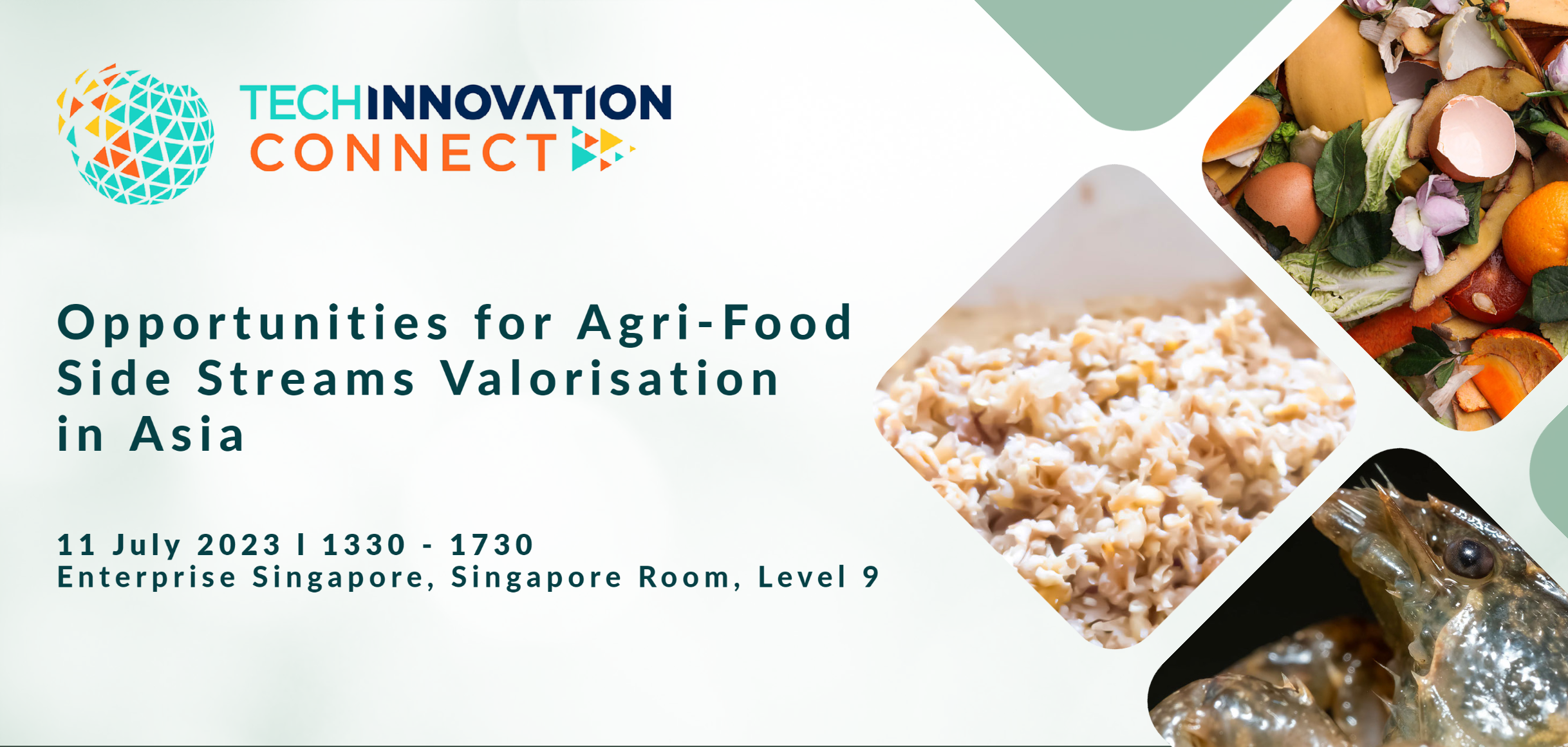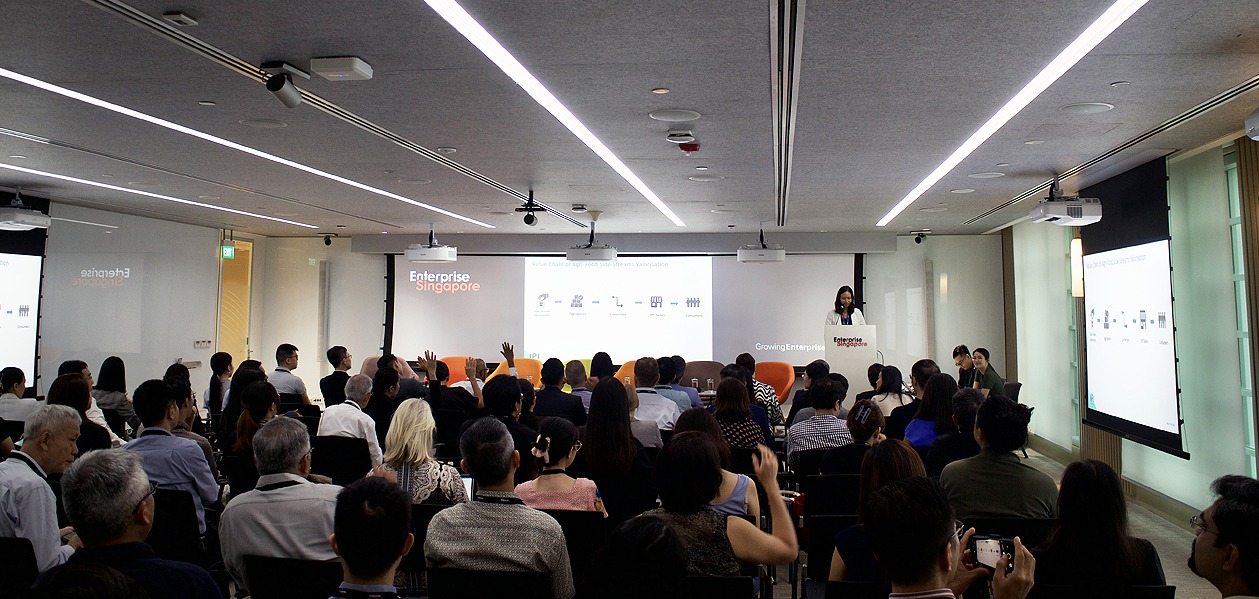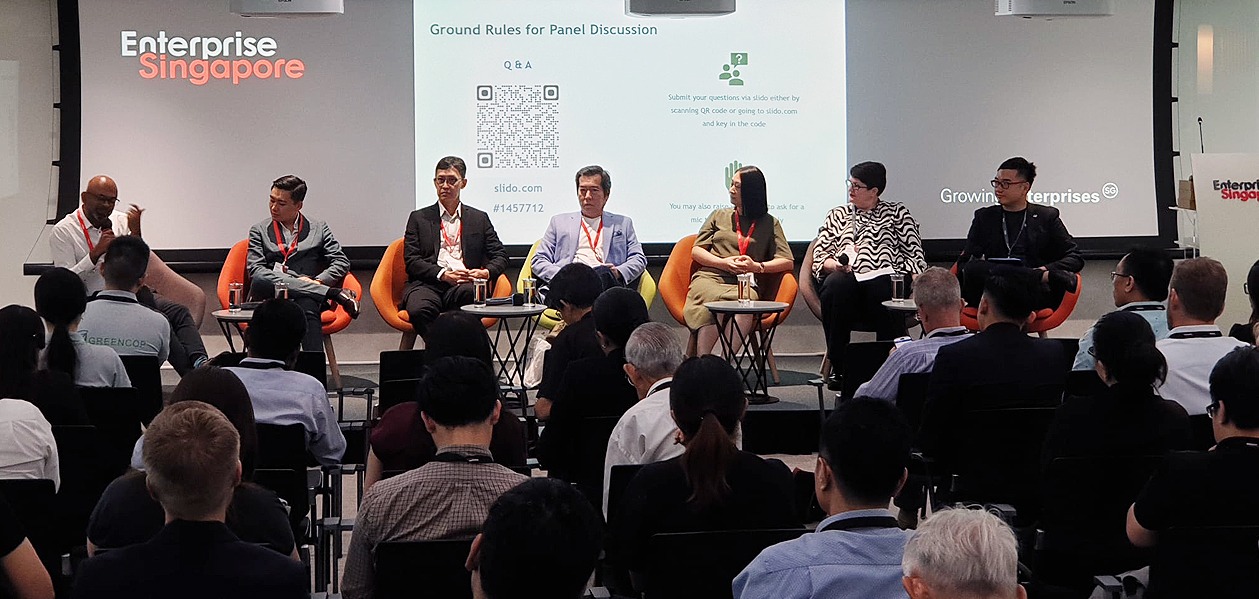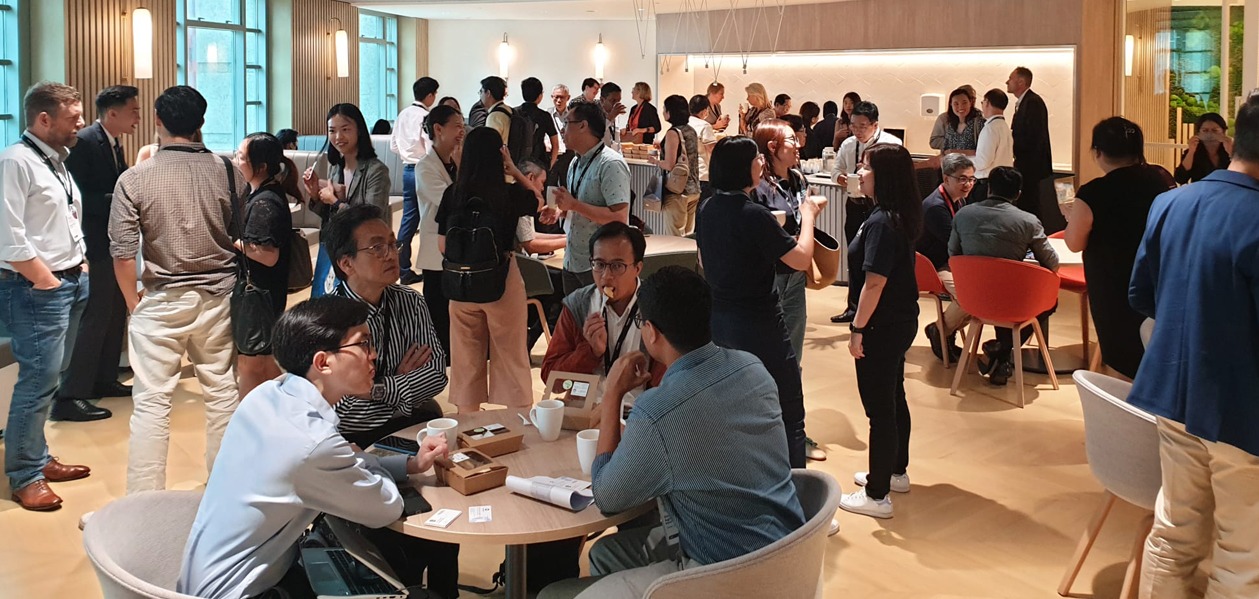At IPI’s agri-food side-stream valorisation event, leading professionals from industry and academia convened to delve into the latest breakthroughs in the industry, emphasising the transformation of side-streams into value-rich products.
Each year, an alarming one-third of global food production never reaches our plates, destined instead for landfills. Throughout complex food production processes, potentially valuable products are discarded as waste. Enter agri-food side-stream valorisation. An emergent and pivotal strategy, the process seeks to reclaim and repurpose food side-streams, like proteins and wastewater, into new products that can be introduced back into the market.
At IPI’s recent TechInnovation Connect event, ‘Opportunities for Agri-Food Side Streams Valorisation in Asia’, held on 11 July, industry players gathered to shed light on the immense potential within this domain. The event brought together a panel of experts from industry and academia to explore sustainable methods of transforming side-streams into high-value products. The event was organised in partnership with Enterprise Singapore and the Singapore Agri-Food Innovation Lab (SAIL).
Setting the tone for the event, the opening remarks by Sharon Tay, Director for Food Manufacturing and Agritech, Enterprise Singapore, underscored the urgency and significance of concerted efforts in developing valorisation technologies. “Such innovations will play an important part in realising Singapore’s 2030 Green Plan, which includes building a green economy with sustainability as a competitive advantage,” said Sharon. “Valorisation technologies not only help to reduce waste-disposal costs but also unlock opportunities in the green economy through new product development.”
Entering new opportunities
In her keynote speech, Adeline Chan, Senior Manager, Innovation & Technology, IPI echoed the importance of agri-food side-stream valorisation and described how policy and the right infrastructure can support the development of such sustainable technologies. “The biomass generated along the agri-food value-chain are like diamonds in the rough,” she said. “They just need a little polishing.”
Adeline explained that despite requiring more effort and investment, utilising side-streams that are typically discarded can yield greater dividends in the long run. However, their potential can only be tapped if companies are able to fit such processes into existing business plans and operations. To do this, companies must consider five main concerns: market demand; the state of existing operations; technology and infrastructure available; the environmental, social and political context; and government regulations.
To help companies navigate the opportunities available, IPI provides business matching, access to innovative technologies and knowledge sharing. Through events and programmes, IPI serves as an innovation catalyst and connects businesses with the right technology partners to accomplish their goals in side-stream valorisation. Following Adeline’s keynote speech, invited panellists shared their unique innovations in the space. Budding efforts, like those shared by the panellists have advanced the industry, but more can be done within the ecosystem to tackle the untapped biomass in the region.
Closing the loop
During the panel discussion, an innovative project was introduced by Dr. Andrew Chew, Founder and CEO of Lignoson; the company with the world’s first and only technology that transforms lignocellulosic fibre waste into a direct replacement for conventional plywood. Abundantly available globally in rice and wheat straw waste and palm biomass waste, it has the potential to revolutionise the plywood industry. Notably, the company’s Lignosonia boards have demonstrated the same mechanical properties as conventional plywood and outperform in several other parameters.
Lignosonia boards are a true example of circularity, that is, using waste to produce and replace and conventional material that relies on natural resources and after use, can be recycled multiple times.
Carbon reduction and sustainability is the vision of Lignoson. The company’s technology is scalable globally, and it holds the potential to reduce up to 95 percent of the 3.5 billion tons of carbon dioxide emitted annually from the global plywood industry, highlighting the importance and significant environmental benefits to side-stream valorisation.
Edward Choi, Group Head of Strategy and Investment at Apeiron Bioenergy, described how his company is similarly serving a growing industry with sustainable methods. “The world has an unquenchable demand for feedstock for biofuel,” he explained. To cater to this demand, Apeiron collects waste cooking oil and processes into feedstock for renewable diesel. With recent investments, the team is also looking to expand into the animal fats sector.
Carl Baptista, Chief Technology Officer and ‘Maggot Man’ at Cuprina, shared how his team has developed a sustainable system to grow all their products in harmony with one another. The company’s main product is sterile, medical grade maggots that are supplied to all public hospitals in Singapore. The maggots are placed on chronic wounds as a sustainable and more effective alternative to surgical debridement. The maggots feed on necrotic material on a cellular level, effectively and precisely cleaning wounds without causing harm.
In addition, blowfly maggots can be produced at scale to act as biodigesters to break down and convert agri-food side streams to valuable blowfly insect protein. With additional processing, bioactive compounds can be extracted from these insect proteins with diverse applications in medicine and industry.
At their farm in Malaysia, the company currently breeds frogs for healing and closing wounds in a system where all side-streams are used. The meat is harvested for food, the skin is used for medical products and the remaining carcass is fed to blowflies that eventually become insect protein for the frogs. Even wastewater is collected and used in plants which are harvested for cosmetic products.
Processing protein-rich products
A testament to the transformative potential of valorisation is the pioneering work by Associate Professor Zhou Yan from Nanyang Technological University's School of Civil and Environmental Engineering. Prof Zhou’s venture began with wastewater treatment.
During the treatment process, a revelation emerged—the biomass resulting from the biological treatment process had a remarkably high protein content, ranging between 30–50 percent of its dry weight. Instead of merely treating wastewater, Prof Zhou’s team saw an opportunity to extract this protein, a move that shifted the focus from waste treatment to resource recovery and valorisation. By enhancing the biological activity integral to the process, the team managed to both improve the nutrient profile and maximise protein extraction. In doing so, they unveiled a sustainable protein source, offering a compelling and sustainable alternative to conventional products.
In addition, Professor Ng Kee Woei from NTU’s School of Materials Science and Engineering also shared his journey in the area of valorisation. Initially, his work began with exploring the use of different cast-off materials in biomedical applications. Similar to Prof Zhou, his work led him to study methods of extracting usable protein from side-streams in the agri-food sector.
The event underscored the importance of collaboration between industry and academia, as well as public and private sectors, in advancing innovative solutions to environmental concerns via agri-food side-stream valorisation techniques. By serving as a hub for innovators and thought leaders, IPI’s platform fosters an environment where meaningful discussions and collaborations can lead to tangible change.
“It’s not just about transforming side-streams but also about reshaping our perspective towards resources and their lifecycle,” said Michael Goh, Chief Operating Officer at IPI. “IPI’s open-innovation framework enables us to harness the specialised expertise of diverse organisations and individuals to help mitigate the risks associated with adopting nascent technologies that drive the agri-food side-stream valorisation space."




